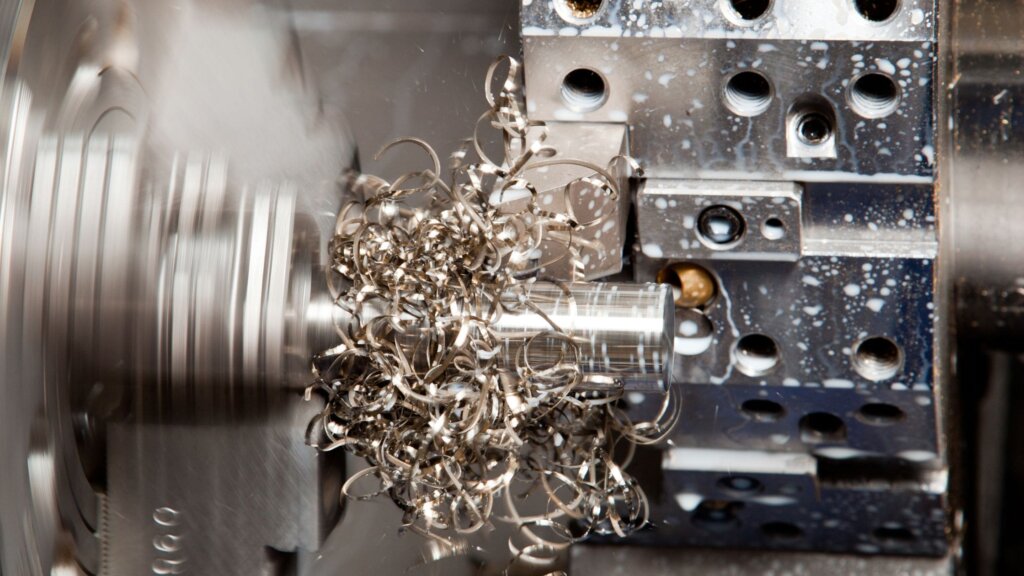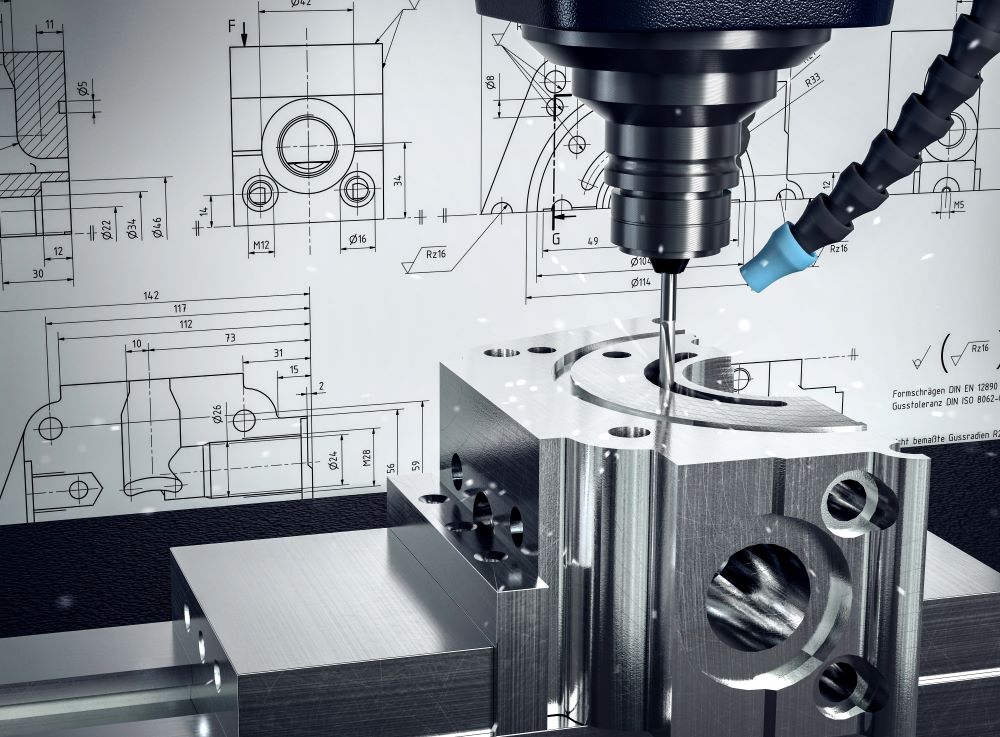Fasteners and Machining: Incorporating Accuracy and Strength in Manufacturing
Fasteners and Machining: Incorporating Accuracy and Strength in Manufacturing
Blog Article
Introducing the Complexities of Fasteners and Machining Processes for Ideal Efficiency
In the world of design and production, the option of bolts and the details of machining procedures play a critical role in identifying the ultimate performance and toughness of a product. From the seemingly simple task of picking the right sort of fastener to the complex precision machining strategies employed, every action in this process demands meticulous interest to information. As we begin on this expedition into the globe of fasteners and machining, we will discover the subtle yet essential aspects that can substantially influence the efficiency and quality of the end product, losing light on the frequently ignored aspects that can make all the distinction in attaining optimum performance.

Significance of Appropriate Bolt Choice
Choosing the ideal fasteners is critical in making certain the structural honesty and durability of any kind of mechanical assembly. Fasteners play a fundamental duty in holding elements together securely, with the right choice adding dramatically to the overall efficiency and reliability of the setting up. When selecting bolts, aspects such as material compatibility, ecological problems, load-bearing capacity, and simplicity of installment need to be carefully taken into consideration to ensure optimal performance.
Improper bolt selection can result in a variety of concerns, consisting of loosening, rust, and also structural failure. Utilizing bolts that are not fit to the particular needs of the assembly can compromise its capability and pose security dangers. For that reason, designers and designers have to diligently assess the application requires and choose fasteners that satisfy or surpass the needed standards and specs.
In addition, the correct fastener selection procedure involves analyzing the joint style, prepared for lots, resonance degrees, and prospective thermal development or tightening to make sure that the selected fasteners can hold up against the operating conditions effectively. By prioritizing correct bolt choice, producers can boost the top quality, sturdiness, and performance of their mechanical settings up.
Types and Features of Fasteners
An essential facet of mechanical assemblies lies in recognizing the diverse kinds and one-of-a-kind features of fasteners utilized in various commercial applications. Fasteners are important components that hold frameworks with each other, ensuring security and capability.
Screws are threaded fasteners that are typically utilized to join 2 or even more elements with each other. Nuts are inside threaded bolts that mate with bolts to hold components with each other. Washing machines are thin plates that distribute the tons of a fastener, avoiding damage to the material being attached.
Comprehending the attributes of each kind of fastener is essential for choosing the ideal one for a particular application, guaranteeing optimum performance and reliability of the mechanical assembly. Fasteners and Machining.
Accuracy Machining Techniques for Effectiveness
The elaborate style needs of numerous fasteners necessitate utilizing accuracy machining methods for optimal efficiency in making processes. Accuracy machining is crucial in guaranteeing that bolts fulfill the specific specifications needed for their intended application. Among the main strategies used in accuracy machining is Computer Numerical Control (CNC) machining, which makes it possible for high degrees of precision and repeatability in the manufacturing of bolts. CNC machines are capable of performing complex cuts and forming procedures with marginal human intervention, resulting in enhanced efficiency and consistency in the production process.
Along with CNC machining, various other accuracy methods such as grinding, milling, and transforming are typically made use of to attain the tight resistances required for fasteners. These strategies allow suppliers to develop bolts with smooth surfaces, exact dimensions, and high structural honesty. By utilizing precision machining strategies, manufacturers can improve the top quality of bolts, lower product waste, and enhance general production effectiveness. The use of sophisticated machining processes aids make certain that bolts meet industry requirements and client expectations for performance and integrity.

Variables Affecting Machining Refine Efficiency
Numerous variables play a considerable function in identifying the performance of machining processes in the production of fasteners. Enhancing these criteria based on the details requirements of the fastener being generated is crucial to attaining precise and cost-efficient machining.
Machine rigidity and security likewise play an important role in figuring out machining procedure efficiency. A steady machine with minimal vibrations can improve accuracy and prevent tool wear, causing better overall performance. Additionally, the internet skill and experience of the equipment driver can not be taken too lightly. An experienced driver can make real-time modifications, troubleshoot problems efficiently, and guarantee that the machining process runs smoothly, ultimately affecting the final quality of the bolt.

Quality Control Actions in Production
Elements affecting machining procedure performance, such as reducing device selection and equipment stability, straight impact the application of quality control measures in manufacturing. Quality control actions are essential in guaranteeing that items fulfill the needed standards and specifications. In the production process, numerous strategies are used to maintain high quality standards. Examination and testing play an important duty in determining any kind of deviations from the desired result. Normal maintenance of machining tools is likewise crucial to promote quality assurance. Calibration of devices and equipments is essential to make sure accurate and accurate production procedures. Furthermore, executing standard operating procedures and protocols can help in maintaining consistency and high quality throughout the manufacturing line. here are the findings Quality control determines not just focus on the end product however likewise on every stage of the production process to avoid errors and problems. By adhering to rigorous quality assurance actions, makers can boost client satisfaction, construct a track record for reliability, and ultimately attain optimal performance in their machining procedures.
Conclusion
In verdict, picking the right bolts and making use of accuracy machining strategies are essential for ideal efficiency in producing procedures. Understanding the kinds and qualities of bolts, in addition to elements influencing machining procedure performance, can result in boosted effectiveness and quality assurance procedures. By focusing on these ins and outs, suppliers can achieve higher levels of performance and dependability in their items.
In the realm of design and production, the option of bolts and the intricacies of machining procedures play an essential function in establishing the best performance and resilience of an item (Fasteners and Machining). One of the main strategies utilized in accuracy machining is Computer system Numerical Control web link (CNC) machining, which allows high degrees of precision and repeatability in the production of bolts. The usage of advanced machining procedures aids guarantee that fasteners meet sector criteria and customer expectations for performance and dependability
In final thought, choosing the right bolts and using accuracy machining techniques are necessary for optimum performance in manufacturing procedures. Recognizing the types and features of fasteners, along with elements affecting machining process efficiency, can lead to improved efficiency and quality control steps.
Report this page